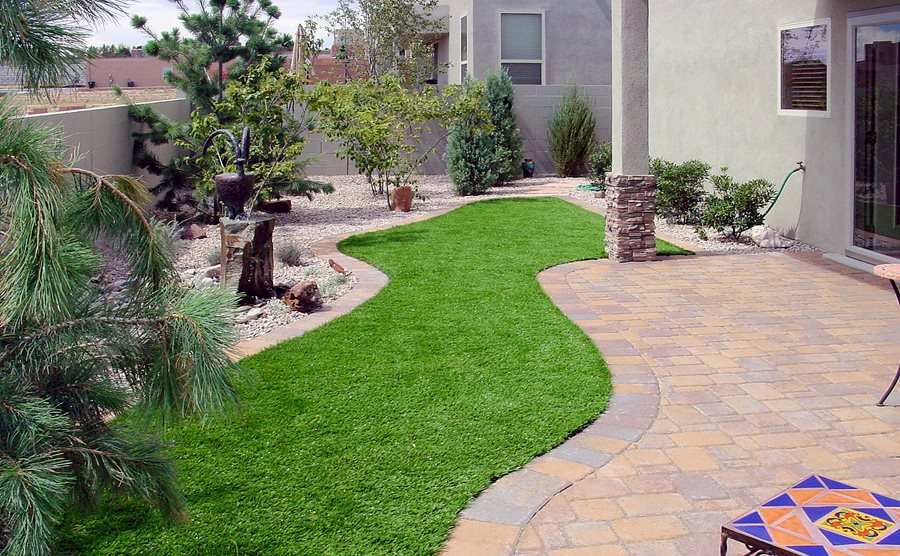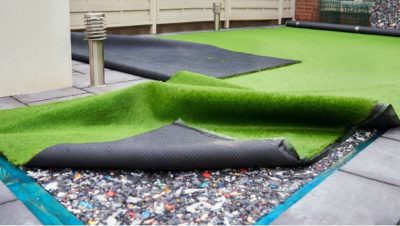Choose Well-Known Artificial turf companies for a Lawn That Stays Green
Choose Well-Known Artificial turf companies for a Lawn That Stays Green
Blog Article
Just How Does Synthetic Grass Installation Transform Your Landscape?
The installation of man-made grass presents a diverse chance for landscape improvement, providing a blend of visual enhancement and functional advantages. Beyond the immediate aesthetic appeal of a constantly green area, fabricated lawn considerably decreases upkeep needs and water intake. Its flexibility enables imaginative landscaping options tailored to different settings, making it a compelling selection for both commercial and residential applications. The ramifications of such a change expand past mere aesthetic appeals and ease, motivating more expedition into the lasting impacts on expense, ecological sustainability, and overall landscape health.
Benefits of Synthetic Grass
When considering landscape design solutions, the benefits of man-made lawn ended up being increasingly obvious. One of one of the most substantial benefits is its low maintenance demands. Unlike natural grass, which requires normal mowing, watering, and fertilizing, synthetic grass preserves its rich appearance without these labor-intensive jobs. This enables homeowner to allot their time and sources to other pursuits.
Additionally, synthetic grass gives a regular having fun surface area, making it ideal for entertainment areas and sports areas. Mesa artificial turf. Its toughness guarantees that it can endure heavy foot traffic without the damage linked with all-natural turf, hence promoting year-round usability
Environmental advantages also play a critical duty in the allure of man-made grass. By removing the requirement for pesticides and herbicides, it contributes to a healthier ecological community. In addition, the reduction in water usage is considerable, specifically in areas susceptible to dry spell.
Furthermore, synthetic grass boosts aesthetic charm, giving a dynamic environment-friendly landscape that continues to be uniform throughout the periods. This uniformity can elevate property value and visual charm, making it an attractive choice for organizations and homeowners alike. In recap, the countless advantages of synthetic grass make it a compelling selection for contemporary landscaping options.
Price Financial Savings In Time

Firstly, artificial turf eliminates the requirement for repeating expenses associated with water, fertilizers, chemicals, and grass upkeep solutions (Artificial turf companies). Property owners can expect to conserve substantially on their water costs, specifically in areas susceptible to dry spell, where irrigation of natural grass can come to be prohibitively pricey. In addition, the minimized need for chemical therapies not only reduces expenses yet also decreases labor expenses related to yard care
Over time, the cumulative monetary advantages of artificial grass can significantly surpass the initial costs, making it a wise financial investment for those looking to boost their landscapes while additionally handling their budgets successfully. In recap, the long-term cost savings linked with artificial grass make it an appealing alternative for homeowners seeking both aesthetic appeals and monetary prudence.
Environmental Influence
The environmental effect of synthetic grass is a topic of considerable passion and discussion. Proponents argue that artificial turf conserves water, as it gets rid of the requirement for irrigation, which is specifically advantageous in dry areas. This water preservation can result in decreased pressure on neighborhood water sources and reduced utility costs for homeowners. Furthermore, synthetic grass eliminates the need for chemical plant foods and chemicals, which can posture risks to neighborhood environments.
Nevertheless, concerns concerning the ecological footprint of artificial turf linger. The production of artificial materials usually requires substantial energy and oil resources, adding to carbon emissions. When fabricated lawn gets to the end of its life cycle, disposal can end up being bothersome, as several products are not naturally degradable and can finish up in land fills (Arizona artificial grass).
One more location of concern is the capacity for microplastics to seep into the soil and waterways, which can detrimentally impact water life and communities. While man-made turf presents specific ecological advantages, it also positions challenges that warrant careful consideration. Stabilizing the advantages of water conservation with the environmental influences of production and disposal is vital for making educated click for more landscaping decisions.
Style Adaptability
Artificial lawn opens up a world of layout convenience, allowing house owners and landscape engineers to produce aesthetically pleasing and useful outside rooms. Unlike typical yard, synthetic grass can be tailored to fit different styles, styles, and objectives, improving the overall landscape style.
One of the key advantages of artificial grass is its flexibility. It can be perfectly incorporated right into diverse environments, from modern gardens to rustic outdoor patios. Home owners can choose from a variety of appearances, colors, and pile elevations, making sure that the lawn complements existing attributes and architectural aspects. This personalization reaches one-of-a-kind installations, such as curvilinear layouts, which can develop eye-catching vibrant designs and focal points.

Maintenance and Durability
With marginal upkeep called for, fabricated lawn provides a functional remedy for property owners looking for a low-maintenance landscape design option. Unlike natural grass, which requires regular mowing, watering, and fertilizing, artificial lawn significantly decreases the time and effort needed to maintain an attractive yard.
The longevity of synthetic grass is another compelling advantage. Top notch artificial turf is crafted to endure various weather, making sure durability gradually. Usually, fabricated turf can last in between 15 to 25 years, depending on the quality of products made his response use of and the level of foot traffic it sustains. This long life equates right into long-lasting expense financial savings, as property owners are less frequently called for to change or fix their landscape.
Additionally, maintenance jobs for synthetic grass are simple. Occasional brushing to keep the blades upright, washing to eliminate debris, and periodic infill replenishment are typically enough to keep its appearance and performance. This simplicity of maintenance enables property owners to enjoy their exterior spaces without the burden of extensive labor.
Conclusion
To conclude, synthetic grass installment considerably boosts landscapes by offering a dynamic, low-maintenance alternative to all-natural turf. The advantages consist of considerable expense financial savings, a positive environmental impact with reduced water use and chemical treatments, and exceptional design adaptability that suits numerous outside aesthetic appeals. Additionally, the toughness of synthetic turf ensures longevity also under heavy foot web traffic. In general, synthetic grass arises as a lasting and functional solution for changing outside spaces into practical and aesthetically enticing settings.

In verdict, man-made lawn installment considerably enhances landscapes by providing a vibrant, low-maintenance choice to all-natural yard.
Report this page